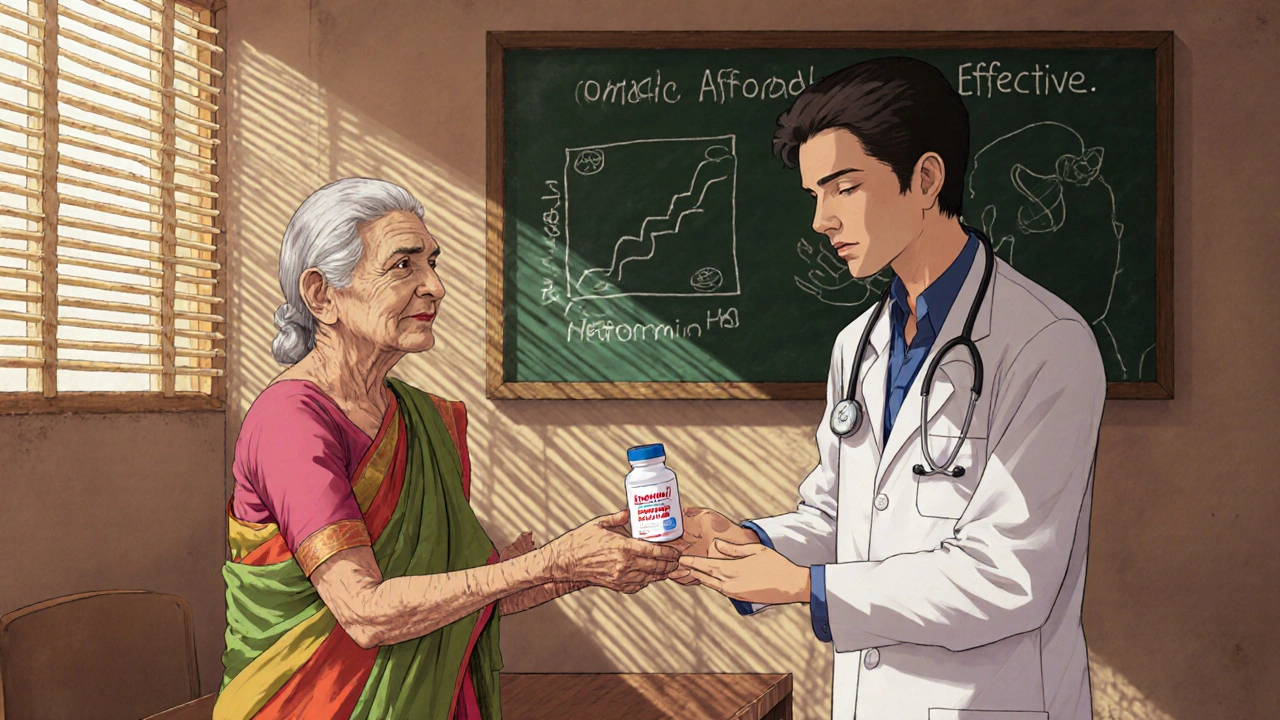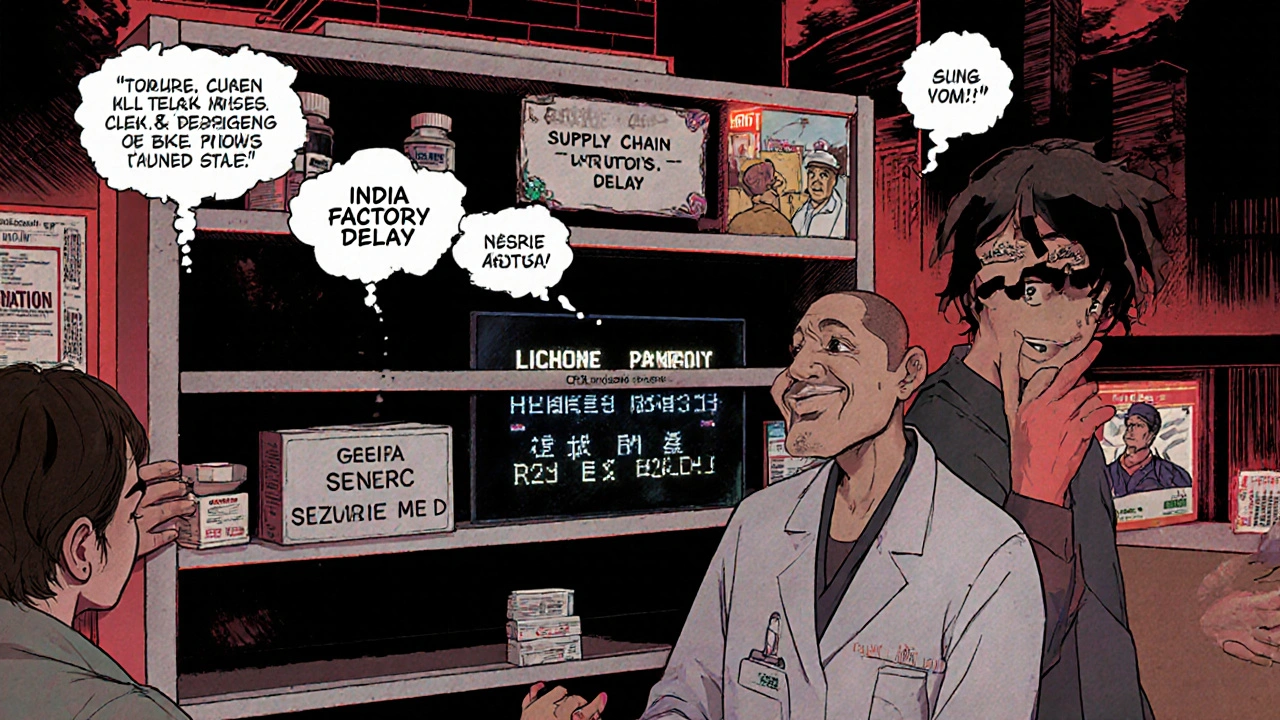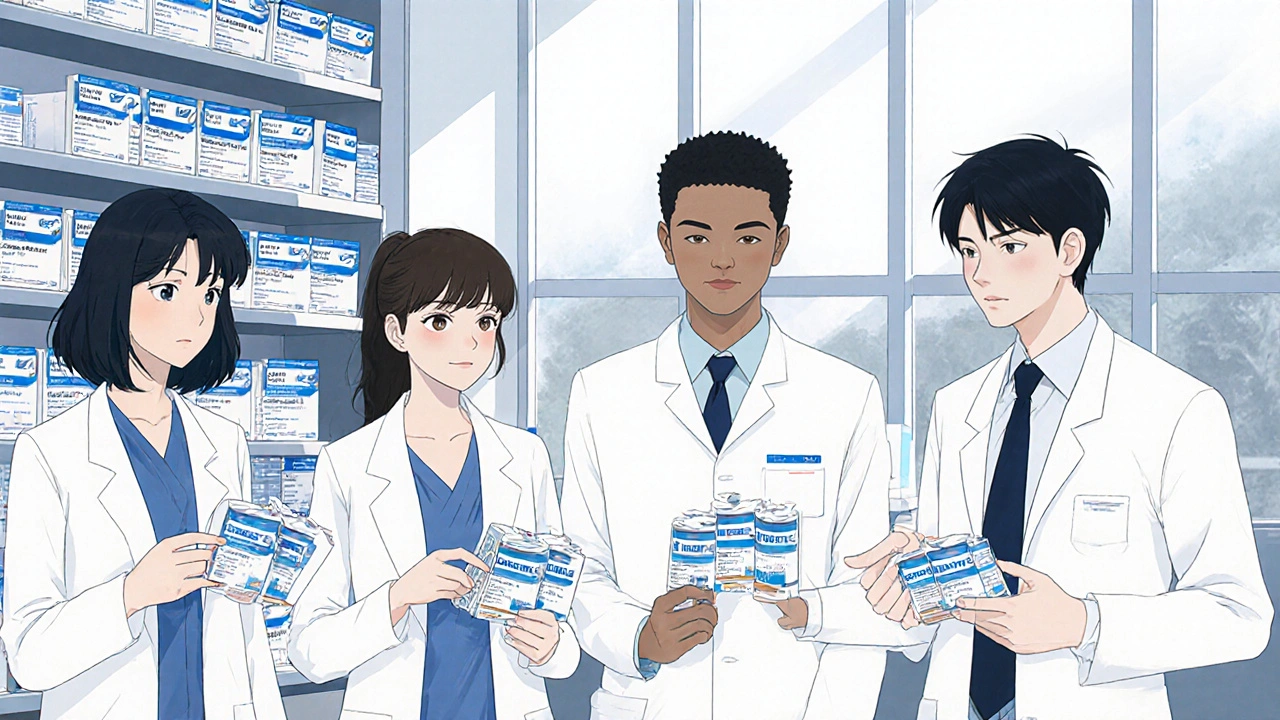When you pick up a prescription at the pharmacy, you might not think twice about whether it’s a brand-name drug or a generic. But across the world, doctors, pharmacists, and healthcare systems have very different opinions about generics - and those opinions are shaped by money, policy, and real-life patient needs.
Europe: Generics as a Policy Tool
In Europe, generics aren’t just an option - they’re the expected standard. Countries like Germany, France, and the UK have spent years building healthcare systems that push pharmacists to substitute brand-name drugs with generics whenever possible. It’s not about distrust in quality; it’s about keeping the system running. German doctors routinely prescribe generics because the government reimburses them at lower rates. In the UK, the NHS encourages substitution to save billions each year. Providers here don’t see generics as second-rate - they see them as the smart, responsible choice. The result? Over 80% of prescriptions filled in Europe are for generics. But growth is slowing. Most therapeutic areas are already saturated with generic options, so the focus has shifted from volume to value - making sure those generics are reliable, consistent, and available when patients need them.Asia-Pacific: Generics as Lifelines
In India and China, generics aren’t just affordable - they’re essential. Millions of people in these countries can’t afford branded drugs. So doctors prescribe generics out of necessity, not preference. Indian manufacturers produce nearly 20% of the world’s generic drugs by volume. About 40% of the generic medicines used in the U.S. come from India. That’s not a coincidence - it’s a global supply chain built on cost efficiency and scale. Providers in Asia don’t debate whether generics work. They know they do. The real challenge is access. In rural India, a diabetic patient might get metformin from a local pharmacy because that’s all they can afford. A heart patient in rural China gets a generic statin because it’s the only one stocked in the village clinic. For these providers, generics are infrastructure - as basic as clean water or electricity. And with aging populations and rising rates of diabetes and heart disease, demand is only growing. The Asia-Pacific market is expanding at over 6% per year - the fastest in the world - because people have no other choice.United States: The Cost-Conscious Paradox
In the U.S., generics are everywhere - 90% of prescriptions are for them. But here’s the twist: they make up only about 15% of total drug spending. Why? Because even generics can be expensive when the original brand-name drug cost $500 a month. A generic version might still cost $30 - and for some patients, that’s still too much. American providers are caught between two realities. On one hand, they know generics save money and improve adherence. On the other, they’ve seen patients skip doses because the generic still cost too much, or because the pharmacy ran out. Drug shortages have become routine. A patient on a generic seizure medication might be switched three times in a year because different batches aren’t available. That erodes trust. And then there’s the supply chain. U.S. doctors rely heavily on Indian and Chinese manufacturers. They know it works - but they also worry. One factory shutdown in India, one FDA inspection failure, and suddenly a critical generic disappears. Providers don’t blame the drugs. They blame the system that makes them so fragile.
Japan: Price Cuts and Patient Acceptance
Japan has taken a different route. Instead of pushing generics through policy alone, they’ve slashed prices every two years - sometimes by 30% or more. That’s forced both manufacturers and providers to adapt. Doctors here used to hesitate to prescribe generics. Now, they do it without a second thought. Patients expect it. Pharmacists explain it. The government doesn’t ask if generics are safe - they assume they are, and they keep lowering the price. The result? Japan’s pharmaceutical market is flat. New drugs come out, but overall spending isn’t rising. That’s not because innovation stopped. It’s because generics now dominate. Providers in Japan see this as a success - a system that works because it’s predictable, transparent, and patient-focused.Emerging Markets: Generics as the New Normal
In Brazil, Turkey, Russia, and other "pharmerging" countries, the story is similar to Asia - but with more political pressure. Governments are actively pushing generics to stretch limited healthcare budgets. In these places, a doctor doesn’t choose between brand and generic - they choose between generic A and generic B, because those are the only two options on the formulary. Providers in these regions don’t see generics as a compromise. They see them as the foundation of care. A patient with hypertension gets a generic ACE inhibitor because that’s what the public clinic stocks. A child with asthma gets a generic inhaler because it’s the only one the government can afford to buy in bulk. There’s no debate. There’s no marketing. Just need, access, and results.


14 Responses
So let me get this straight - in Europe, generics are the default because it’s cheaper, in Asia because people can’t afford anything else, and in the US? We pay $30 for a pill that should cost $3 because the middlemen are all on vacation and the FDA is napping. 😅
Also, why does every country have a different system? It’s like healthcare is a game of musical chairs and the drugs are the chairs. Someone’s always left standing - usually the patient.
my grandma in ontario got her blood pressure med switched 4 times last year. same pill, diff color. she stopped taking it. no one asked why.
Biggest issue in the US isn’t the generics - it’s the supply chain chaos. One factory in India shuts down, and suddenly 3 million people can’t get their seizure med. 🤯
Doctors aren’t against generics. We’re against the system that makes them unreliable. And yeah, biosimilars? Game changer. But only if we stop treating them like they’re magic beans.
Look, I’ve been prescribing generics since 2008 and I’ve seen everything - from patients crying because they can’t afford the co-pay on a $12 generic, to pharmacists giving them the wrong version because the barcode didn’t scan. It’s not that generics don’t work - it’s that the entire infrastructure around them is held together with duct tape and hope.
And don’t even get me started on the pharmacy benefit managers. They’re the real villains here. They don’t care if you get your meds. They care if the rebate check clears. Meanwhile, a diabetic in rural Texas is skipping doses because the pharmacy ran out of the generic metformin and the next shipment’s delayed ‘til next month. Again.
Japan’s model? Perfect. Lower prices every two years, no drama, patients trust it. We could do that. But we’d have to stop treating healthcare like a stock market ticker.
Also, biosimilars are the future. Oncologists are already using them. The data’s solid. But insurance companies still fight them like they’re radioactive. Why? Because they’re still hooked on the old model. And that’s not just lazy - it’s deadly.
And don’t even get me started on the ‘brand loyalty’ nonsense. No one’s loyal to a pill. They’re loyal to not dying. If a generic saves your life and costs $5, why are we still arguing?
It’s not about trust in the science. It’s about trust in the system. And right now? We’ve broken that trust. And it’s going to take way more than a new label to fix it.
india makes most of our generics but we dont trust them 😂
we import em then act like theyre cursed
weird flex but ok
THIS IS WHY AMERICA IS BROKE. We let foreign countries make our medicine and then act shocked when it runs out. 🤬
It’s not a ‘supply chain issue’ - it’s a national security crisis. We used to make our own pills. Now we’re begging China and India for our heart meds. This isn’t capitalism - it’s surrender.
And don’t even get me started on biosimilars. They’re not ‘equal.’ They’re cheap knockoffs. You think your cancer drug is the same just because it’s cheaper? Wake up. The FDA is asleep at the wheel.
And you wonder why people are dying? It’s because we stopped being proud. We stopped being American. We outsourced our health. And now we’re paying the price.
Generics are fine. The problem is the switches. One month it’s one maker, next month another. Patient gets confused. Side effects change. Docs don’t track it. It’s chaos.
One must consider the epistemological framework underpinning pharmaceutical equivalence. The bioequivalence standard of 80-125% AUC is statistically arbitrary and fails to account for inter-individual pharmacokinetic variance. Thus, the assumption of therapeutic interchangeability is a fallacy rooted in utilitarian economics rather than clinical science.
Moreover, the cultural commodification of health outcomes has led to the normalization of pharmaceutical austerity as a moral imperative - a dangerous conflation of cost-efficiency with ethical care.
I’ve seen patients on generics for 15 years. No issues. No side effects. No drama. The system’s broken, not the drugs.
Stop blaming the pill. Start blaming the middlemen.
we let china make our medicine and now we wonder why we cant breathe
trump was right about china
generics are communist medicine
american pills are better
just say no to foreign pills
Just had my Irish GP switch me to a generic for my thyroid med. Same pill, half the price. She said ‘if it works, why pay more?’
…and then she handed me a tea biscuit. Classic.
Wow. So you’re telling me that when you don’t have enough money, you take cheaper medicine? Shocking. I didn’t realize poverty was a medical condition.
Also, why are we even talking about this? Everyone knows the rich get the good stuff and the poor get the ‘it’s basically the same’ stuff. That’s just how the world works.
Next you’ll tell me water is expensive in Flint. I’m sure they’re just being dramatic.
Everyone’s so chill about generics like it’s not a betrayal. Like it’s not the system saying ‘you’re not worth the real thing.’
My mom’s on a generic for her heart. Last month, the pharmacy gave her a different one. She got dizzy. Spent three days in bed.
They didn’t even call to check. Just shipped a new batch. Like she’s a vending machine.
And now we’re supposed to be ‘thankful’ because it’s cheaper? No. I’m angry. We’re not just saving money. We’re sacrificing dignity.
And don’t give me that ‘Japan does it better’ crap. Japan doesn’t have 30% of its population working two jobs just to afford insulin.
This isn’t healthcare. It’s a hostage situation.
Let’s be real - this whole ‘generics are fine’ narrative is a distraction. The real issue is that drug companies are allowed to patent the same molecule 17 times under different names. Generics are the Band-Aid on a hemorrhage.
And biosimilars? They’re not ‘cheaper versions.’ They’re legal loopholes disguised as innovation.
The entire system is rigged. We’re not fixing healthcare. We’re just rearranging deck chairs on the Titanic while the pharma CEOs cash out.
And you wonder why people don’t trust doctors? Because we’re the ones telling them to take the cheaper pill while the CEO buys a third yacht.